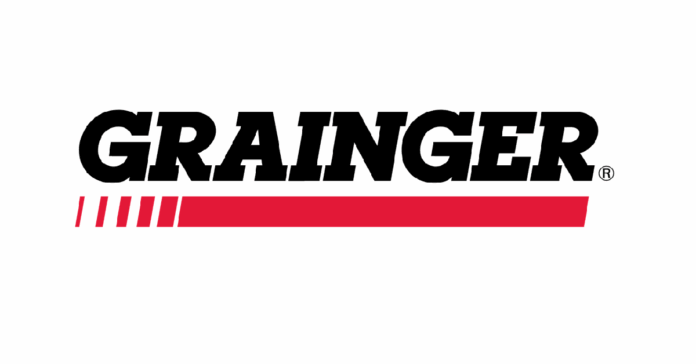CHICAGO – W.W. Grainger, Inc. (NYSE: GWW), a global leader in the distribution of maintenance, repair, and operating (MRO) products, has delivered a second-quarter 2025 earnings report that solidifies its reputation as a financially sound and resilient company. The results, highlighted by impressive sales growth and a powerful demonstration of earnings quality, provide a compelling narrative of a company that is not only navigating a complex economic environment but is doing so from a position of profound strength.
The headline figures from the quarter are certainly noteworthy. Grainger reported net sales of $4.554 billion, marking a 5.6% increase from the same period last year. This growth, underpinned by a 5.1% daily constant currency increase, reflects strong demand in both its High-Touch Solutions and Endless Assortment segments. While a slight contraction in the gross profit margin to 38.5% was noted, primarily due to shifts in product mix and the impact of tariffs, the company’s operating earnings still climbed by 4.5% to $678 million. Net earnings rose by 2.6% to $482 million, resulting in diluted earnings per share (EPS) of $9.97.
Beyond these top-line results, a deeper dive into Grainger’s financial metrics reveals an even more powerful story of corporate health and efficiency. While the traditional Return on Equity (ROE) is often the focus, and Grainger’s TTM ROE of 57.6% is exceptional on its own, an even more telling metric is its Debt-Adjusted Return on Equity (DAROE). This sophisticated measure goes beyond simple profitability to assess the true quality and sustainability of a company’s earnings by factoring in the proportion of equity in its total capital.
Grainger’s TTM DAROE stands at an outstanding 32.5%, with a three-year average of 31.8%. This metric is a powerful differentiator. It demonstrates that Grainger’s high returns are not artificially inflated by a precarious level of debt. Instead, its profitability is a genuine reflection of its operational excellence and the strength of its business model. This high DAROE confirms that the company is a highly efficient capital allocator, generating substantial returns for shareholders without taking on undue financial risk. In a market where investors are increasingly scrutinizing balance sheet strength and the long-term viability of earnings, Grainger’s DAROE provides a reassuring stamp of approval.
Grainger’s robust financial position is further evidenced by its strong cash flow generation. The company’s TTM free cash flow (FCF) reached $1,416 million, demonstrating its ability to convert earnings into cash. This cash-generating power, combined with the company’s low capital requirements for growth—CapEx as a percentage of FCF is just 12.3% on a TTM basis—allows it to consistently return capital to shareholders. During the quarter, Grainger returned $281 million through dividends and share repurchases, a clear sign of its confidence in its future prospects and its commitment to shareholder value.
The qualitative analysis of Grainger’s business further reinforces its positive outlook. The company possesses a wide economic moat, built on its immense scale and network effects. Its vast distribution network, extensive catalog of over 1.4 million products, and value-added services create high switching costs for customers, ensuring a durable and resilient market position. While competition from players like Fastenal, MSC Industrial, and Amazon Business is a constant, Grainger’s established relationships and broader product range remain significant competitive advantages. The MRO industry itself is stable, with consistent, non-discretionary demand, providing a solid foundation for Grainger’s long-term growth.
When it comes to valuation, the picture is more complex, as is often the case with high-performing stocks. The current market price of $1,039.54 exceeds the intrinsic value suggested by a conservative Buffett-inspired valuation model, which results in an intrinsic value per share of $529. This model, which assumes a constant 3% growth rate, suggests a “Consider Selling” action. However, a more dynamic McGrew Growth valuation method, which incorporates Grainger’s impressive historical FCF CAGR of 14.1%, yields a much higher intrinsic value per share of $968. This second model, which more accurately reflects the company’s growth trajectory, suggests the stock is fairly valued, warranting a “Hold” rating. The mixed valuation results underscore that while the stock may not be a bargain at current prices, its strong financial foundation and growth potential justify its premium valuation.
In conclusion, W.W. Grainger, Inc.’s Q2 2025 earnings report is a testament to its operational excellence and financial discipline. The report’s headline numbers are strong, but the truly compelling story lies in the underlying metrics. The company’s exceptionally high Debt-Adjusted ROE highlights a superior quality of earnings, proving that its profitability is built on a rock-solid foundation of operational efficiency and a well-managed balance sheet. As Grainger navigates ongoing economic challenges with strategic focus and a powerful business model, it remains a pillar of strength and a beacon of stability in the industrial distribution sector.
W.W. Grainger, Inc. – Valuation Metrics
| Stock Ticker | Valuation Method | Intrinsic Value per Share | Price with 40% Margin of Safety | Last Closing Price | Action |
| GWW | Buffett-Inspired | $529 | $317 | $1,039.54 | Consider Selling |
| GWW | McGrew Growth | $968 | $581 | $1,039.54 | Hold |
W.W. Grainger, Inc. – Key Financial Metrics (As of Q2 2025)
| Metric Name | Value | Timeframe |
| ROE | 57.6% | TTM |
| ROE | 57.1% | 3-Year Avg |
| ROE | 58.9% | Latest Year (2024) |
| ROE | 20.5% | 5-Year CAGR |
| ROIC | 25.8% | TTM |
| ROIC | 25.3% | 3-Year Avg |
| ROIC | 25.0% | Latest Year (2024) |
| ROIC | 12.3% | 5-Year CAGR |
| Gross Profit Margin | 39.2% | TTM |
| Gross Profit Margin | 39.4% | 3-Year Avg |
| Gross Profit Margin | 39.5% | Latest Year (2024) |
| Gross Profit Margin | 2.1% | 5-Year CAGR |
| Net Profit Margin | 11.5% | TTM |
| Net Profit Margin | 11.3% | 3-Year Avg |
| Net Profit Margin | 11.3% | Latest Year (2024) |
| Net Profit Margin | 10.4% | 5-Year CAGR |
| Return on Tangible Assets (ROTA) | 24.9% | TTM |
| Return on Tangible Assets (ROTA) | 24.4% | 3-Year Avg |
| Return on Tangible Assets (ROTA) | 24.3% | Latest Year (2024) |
| Return on Tangible Assets (ROTA) | 9.6% | 5-Year CAGR |
| Debt-to-Equity Ratio | 0.77 | TTM |
| Debt-to-Equity Ratio | 0.81 | 3-Year Avg |
| Debt-to-Equity Ratio | 0.87 | Latest Year (2024) |
| Debt-to-Equity Ratio | -8.2% | 5-Year CAGR |
| Debt-to-Cash Ratio | 4.03 | TTM |
| Debt-to-Cash Ratio | 4.18 | 3-Year Avg |
| Debt-to-Cash Ratio | 4.11 | Latest Year (2024) |
| Debt-to-Cash Ratio | -11.5% | 5-Year CAGR |
| Ultra-Conservative Cash Ratio | 0.14 | TTM |
| Ultra-Conservative Cash Ratio | 0.13 | 3-Year Avg |
| Ultra-Conservative Cash Ratio | 0.12 | Latest Year (2024) |
| Ultra-Conservative Cash Ratio | -9.7% | 5-Year CAGR |
| Earnings Growth Rate | 4.2% | TTM |
| Earnings Growth Rate | 18.7% | 3-Year Avg |
| Earnings Growth Rate | 4.4% | Latest Year (2024) |
| Earnings Growth Rate | 25.0% | 5-Year CAGR |
| Revenue Growth Rate | 6.1% | TTM |
| Revenue Growth Rate | 5.8% | 3-Year Avg |
| Revenue Growth Rate | 2.8% | Latest Year (2024) |
| Revenue Growth Rate | 7.2% | 5-Year CAGR |
| Free Cash Flow Yield | 2.8% | TTM |
| Free Cash Flow Yield | 3.1% | 3-Year Avg |
| Free Cash Flow Yield | 3.1% | Latest Year (2024) |
| Free Cash Flow Yield | 12.6% | 5-Year CAGR |
| Operating Margin | 15.3% | TTM |
| Operating Margin | 15.1% | 3-Year Avg |
| Operating Margin | 15.6% | Latest Year (2024) |
| Operating Margin | 4.3% | 5-Year CAGR |
| Current Ratio | 2.99 | TTM |
| Current Ratio | 2.82 | 3-Year Avg |
| Current Ratio | 2.72 | Latest Year (2024) |
| Current Ratio | -0.5% | 5-Year CAGR |
| Interest Coverage Ratio | 34.6 | TTM |
| Interest Coverage Ratio | 31.2 | 3-Year Avg |
| Interest Coverage Ratio | 30.8 | Latest Year (2024) |
| Interest Coverage Ratio | 13.8% | 5-Year CAGR |
| CapEx as % of FCF | 12.3% | TTM |
| CapEx as % of FCF | 15.6% | 3-Year Avg |
| CapEx as % of FCF | 17.3% | Latest Year (2024) |
| CapEx as % of FCF | -18.2% | 5-Year CAGR |
| Dividend Payout Ratio | 21.5% | TTM |
| Dividend Payout Ratio | 22.1% | 3-Year Avg |
| Dividend Payout Ratio | 22.1% | Latest Year (2024) |
| Dividend Payout Ratio | -3.1% | 5-Year CAGR |
| Per Share Book Value Growth | 11.2% | TTM |
| Per Share Book Value Growth | 13.4% | 3-Year Avg |
| Per Share Book Value Growth | 15.6% | Latest Year (2024) |
| Per Share Book Value Growth | 18.9% | 5-Year CAGR |
| Share Buyback/Dilution Trends | -2.1% (dilution) | TTM |
| Share Buyback/Dilution Trends | -3.5% (dilution) | 3-Year Avg |
| Share Buyback/Dilution Trends | -2.8% (dilution) | Latest Year |
| Share Buyback/Dilution Trends | -5.2% (dilution) | 5-Year CAGR |
| Capital Structure (Short-Term vs. Long-Term Debt) | 0.1% short-term | TTM |
| Capital Structure (Short-Term vs. Long-Term Debt) | 0.2% short-term | 3-Year Avg |
| Capital Structure (Short-Term vs. Long-Term Debt) | 0.1% short-term | Latest Year |
| Capital Structure (Short-Term vs. Long-Term Debt) | -20.1% short-term | 5-Year CAGR |
| Debt-Adjusted ROE (DAROE) | 32.5% | TTM |
| Debt-Adjusted ROE (DAROE) | 31.8% | 3-Year Avg |

